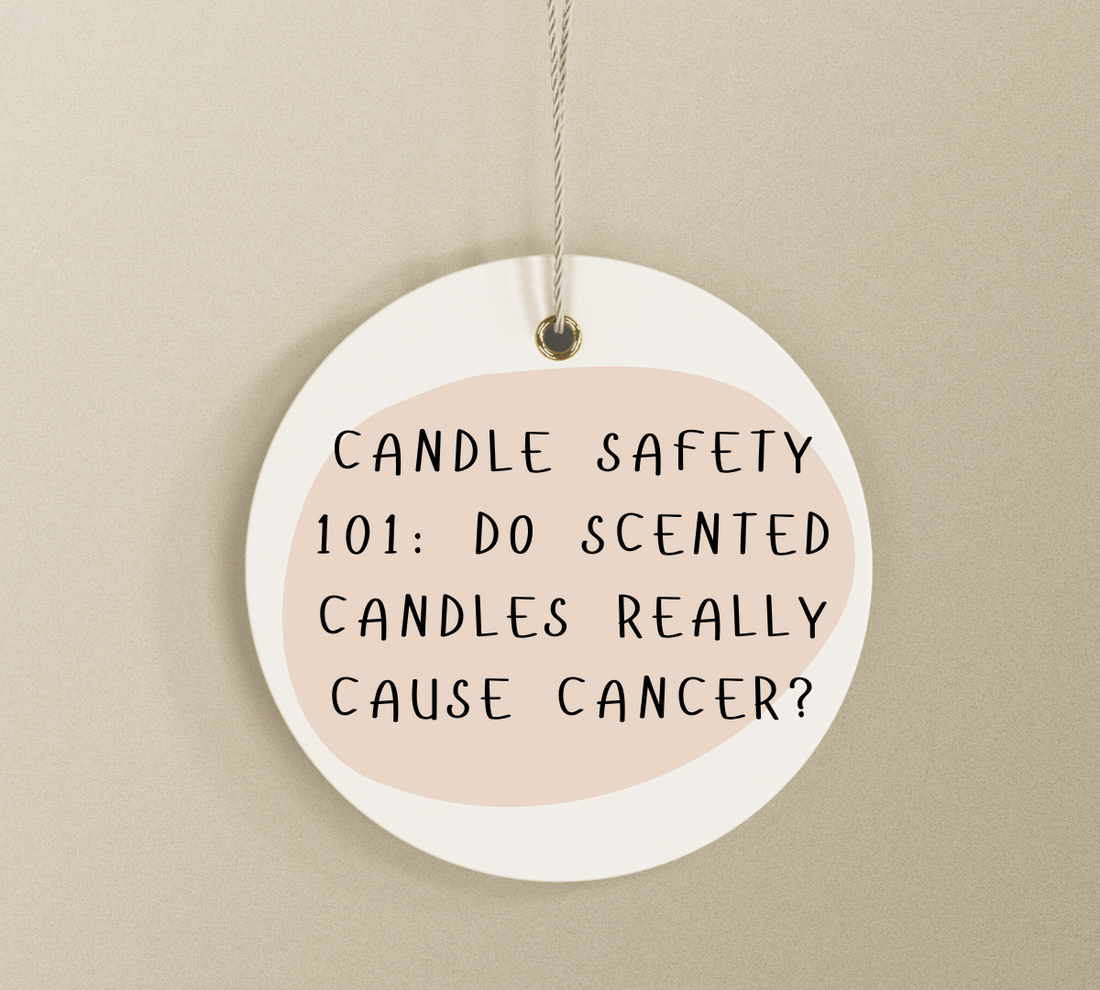
Candle Safety 101: Do Scented Candles Really Cause Cancer?
Tracy LombardiShare
There’s nothing like the warm glow of a candle filling your space with cozy fall vibes or a favorite floral scent. But if you’ve ever wondered, do scented candles cause cancer? You’re not alone. With all the buzz around candle safety, let’s unpack what’s fact, what’s myth, and how you can enjoy your candles without worry.

The Truth Behind Candle Cancer Concerns
The idea that scented candles may be linked to cancer typically stems from studies on the effects of burning certain waxes in small, poorly ventilated spaces. Some research has suggested that burning paraffin-based candles over long periods may release trace amounts of chemicals like VOCs (volatile organic compounds) and soot particles.
That might sound scary, but here’s the important part: these amounts are generally far below the safety limits set by organizations like the WHO. So while it’s true that candles release small amounts of byproducts, occasional burning in a well-ventilated room is unlikely to be harmful.
Are Scented Candles Bad for You? Understanding the Risks
The question "are scented candles bad for you?" doesn't have a simple yes or no answer. The health implications depend on several factors, including the type of wax used, frequency of use, ventilation, and individual sensitivity.
Paraffin Wax: The Primary Concern
Many aromatherapy and scented candles are made of paraffin, which is a petroleum byproduct that releases carcinogenic soot when burned. Paraffin wax candles produce soot and toxins when burned, making them less environmentally friendly and potentially harmful to human health.
Despite these concerns, a study published in the Journal of Regulatory Toxicology and Pharmacology found that using scented candles with paraffin wax under normal conditions does not pose any health risks when the study replicated typical household candle use conditions. This suggests that occasional use may not be problematic, but regular, prolonged exposure could be a different story.
Who Should Be Most Concerned?
People who are occupationally exposed to aromatic amines may face increased risk, as small but chronically inhaled scented candle fumes might increase the risk of urothelial cancer development in those already exposed to these chemicals. This includes workers in certain industries such as chemical manufacturing, rubber production, and textile dyeing.

Safer Alternatives: The Best Wax for Scented Candles
When choosing candles, the type of wax makes a significant difference in safety and environmental impact. Here's a breakdown of your options:
Are Coconut Wax Candles Safe?
Coconut wax is considered the healthiest option among the three most common waxes (coconut, soy, and paraffin). Both coconut and soy wax candles are known for burning cleanly as they are natural forms of wax derived from plant materials, but coconut wax takes the cake for clean burning.
Coconut wax offers several advantages:
- Burns cleaner with minimal soot production
- Made from renewable, natural resources
- Longer burn time compared to paraffin
- Better scent throw than most natural alternatives
- Biodegradable and sustainable
Soy Wax: A Popular Natural Alternative
Soy and coconut wax candles are a more sustainable, eco-friendly, and health-conscious option than traditional paraffin wax candles. Artisanal soy candles are made from natural, renewable ingredients like soybeans, are eco-friendly and sustainable, and burn 35-50% longer than paraffin alternatives.
Soy wax is denser than paraffin and typically requires more heat to burn it up, which means that a soy wax candle would probably burn longer than a paraffin candle.
Non-Toxic Wood Wick Candles
If you’ve seen candles with wood wicks crackling like a mini fireplace, you know how cozy they feel. But beyond the vibe, non-toxic wood wick candles can also be a safer option, especially when paired with soy or coconut wax. They burn evenly, minimize tunneling, and create less smoke than some traditional wicks.

Finding Organic Candles and the Healthiest Candles to Burn
When shopping for the healthiest candles to burn, look for these characteristics:
Organic Candles Features:
- Natural wax (soy, coconut, beeswax, or blends)
- Cotton or wood wicks (no lead cores)
- Natural essential oils instead of synthetic fragrances
- Minimal or no artificial additives
- Certified organic ingredients, when available
What to Avoid:
- Paraffin wax candles
- Candles with lead wicks
- Heavily scented candles with synthetic fragrances
- Candles with artificial dyes
- Cheap, imported candles with unknown ingredients
Safety Tips for Healthier Candle Use
Regardless of which type of candle you choose, following proper safety practices can minimize health risks:
- Ensure Proper Ventilation: Always burn candles in well-ventilated areas to prevent the accumulation of potentially harmful compounds.
- Limit Burn Time: Don't burn candles for more than 3-4 hours at a time, and avoid burning multiple candles simultaneously in the same room.
- Trim Your Wicks: Keep wicks trimmed to ¼ inch to reduce soot production and ensure clean burning.
- Choose Quality Over Quantity: Invest in fewer, higher-quality candles made from natural materials rather than many cheap alternatives.
- Consider Alternatives: Electric wax warmers, reed diffusers, or essential oil diffusers can provide fragrance without combustion-related risks.

The Bottom Line
So, do scented candles cause cancer? The short answer: probably not in the way many fear. The biggest risks come from frequent, long-term burning of paraffin candles in closed spaces. If you love candles (like I do!), the safer choice is to go for coconut, soy, or beeswax candles, avoid essential oils and chemical-based candles, and keep your space well-ventilated.
Candles should bring comfort, not worry. By choosing high-quality, non-toxic candles and following a few safety tips, you can enjoy their glow and fragrance without stressing over health risks.